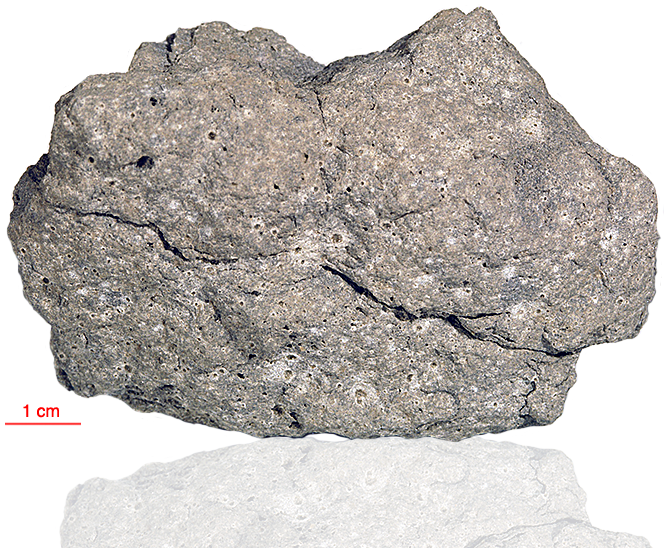
Fact sheet
62295 is a clast-bearing impact-melt breccia characterized by randomly oriented plagioclase laths (up to 0.8 mm) intergrown with skeletal olivine crystals resulting in a variolitic texture. The interstices are filled with a complex mesostasis and relict clasts of plagioclase, rare lithic clasts and conspicuous barred olivine-like bodies scattered randomly throughout the rock. Octahedra of tiny pink Mg-rich spinel crystals commonly occur in plagioclase. Both irregular vugs (up to 1 mm) and spherical vesicles (up to 0.4 mm) are relatively common. Schreibersite is also said to be common. Rotation 2 shows a xenocryst of olivine with a reaction rim.
The sample weighed 250.8 grams before analysis and has been dated at 3.866±0.012 billion years (Ar/Ar).
Further details of this and other Apollo samples are here: http://curator.jsc.nasa.gov/lunar/
The Apollo 16 landing site was in the hilly region around Descartes crater in the lunar highlands. The landing spot was chosen to allow the astronauts to gather geologically older lunar material (Descartes Formation and the Cayley Formation) than the samples obtained in the first four landings, which were in or near lunar maria.
The mission lasted 11.1 days, with a stay on the lunar surface of 71 hours. The crew were on the lunar surface for 20.2 hours during which they traversed approximately 27 kilometers and collected approximately 96 kilograms of samples.
Apollo 16 was launched on 16 April 1972.






